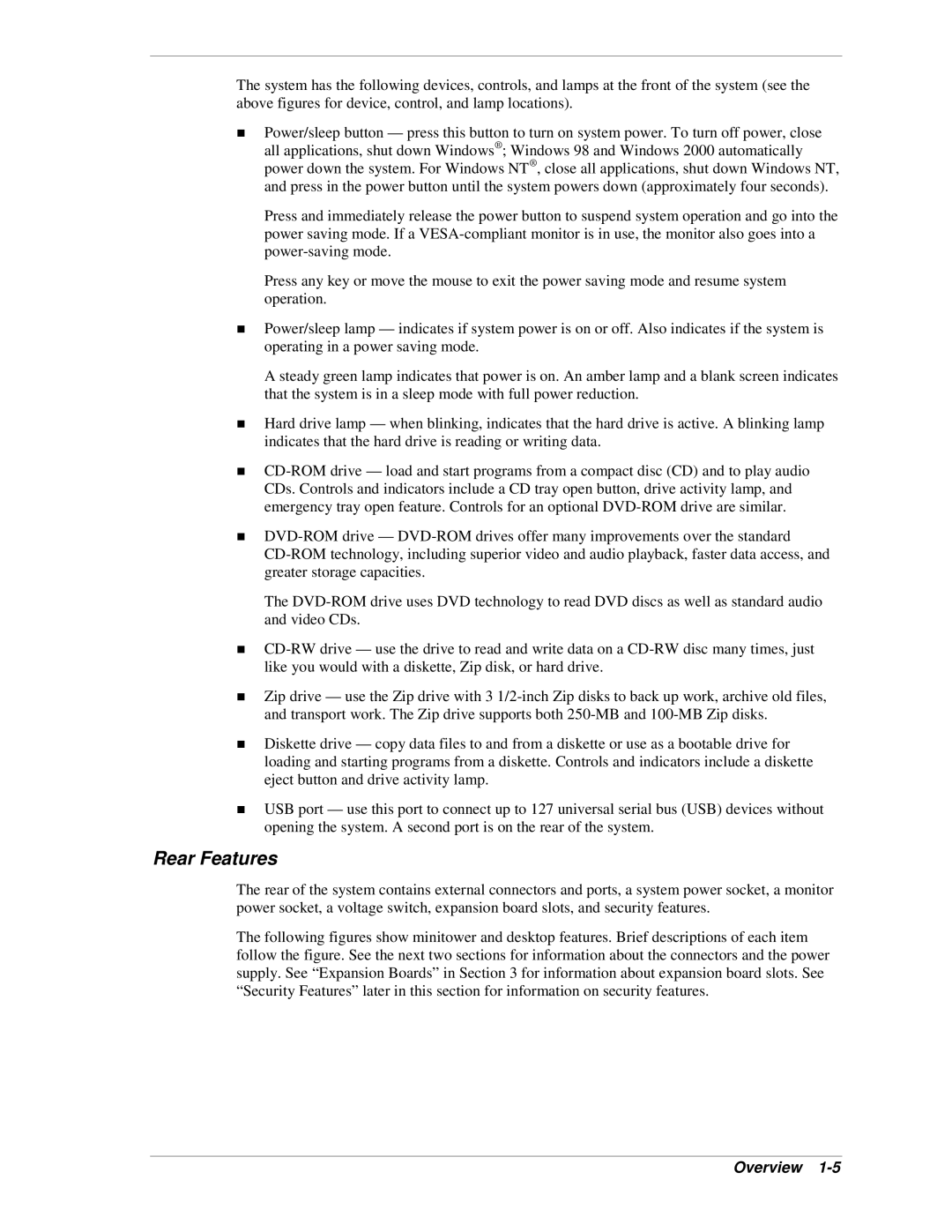
The system has the following devices, controls, and lamps at the front of the system (see the above figures for device, control, and lamp locations).
!Power/sleep button — press this button to turn on system power. To turn off power, close all applications, shut down Windows® ; Windows 98 and Windows 2000 automatically power down the system. For Windows NT® , close all applications, shut down Windows NT, and press in the power button until the system powers down (approximately four seconds).
Press and immediately release the power button to suspend system operation and go into the power saving mode. If a
Press any key or move the mouse to exit the power saving mode and resume system operation.
!Power/sleep lamp — indicates if system power is on or off. Also indicates if the system is operating in a power saving mode.
A steady green lamp indicates that power is on. An amber lamp and a blank screen indicates that the system is in a sleep mode with full power reduction.
!Hard drive lamp — when blinking, indicates that the hard drive is active. A blinking lamp indicates that the hard drive is reading or writing data.
!
!
The
!
!Zip drive — use the Zip drive with 3
!Diskette drive — copy data files to and from a diskette or use as a bootable drive for loading and starting programs from a diskette. Controls and indicators include a diskette eject button and drive activity lamp.
!USB port — use this port to connect up to 127 universal serial bus (USB) devices without opening the system. A second port is on the rear of the system.
Rear Features
The rear of the system contains external connectors and ports, a system power socket, a monitor power socket, a voltage switch, expansion board slots, and security features.
The following figures show minitower and desktop features. Brief descriptions of each item follow the figure. See the next two sections for information about the connectors and the power supply. See “Expansion Boards” in Section 3 for information about expansion board slots. See “Security Features” later in this section for information on security features.
Overview
